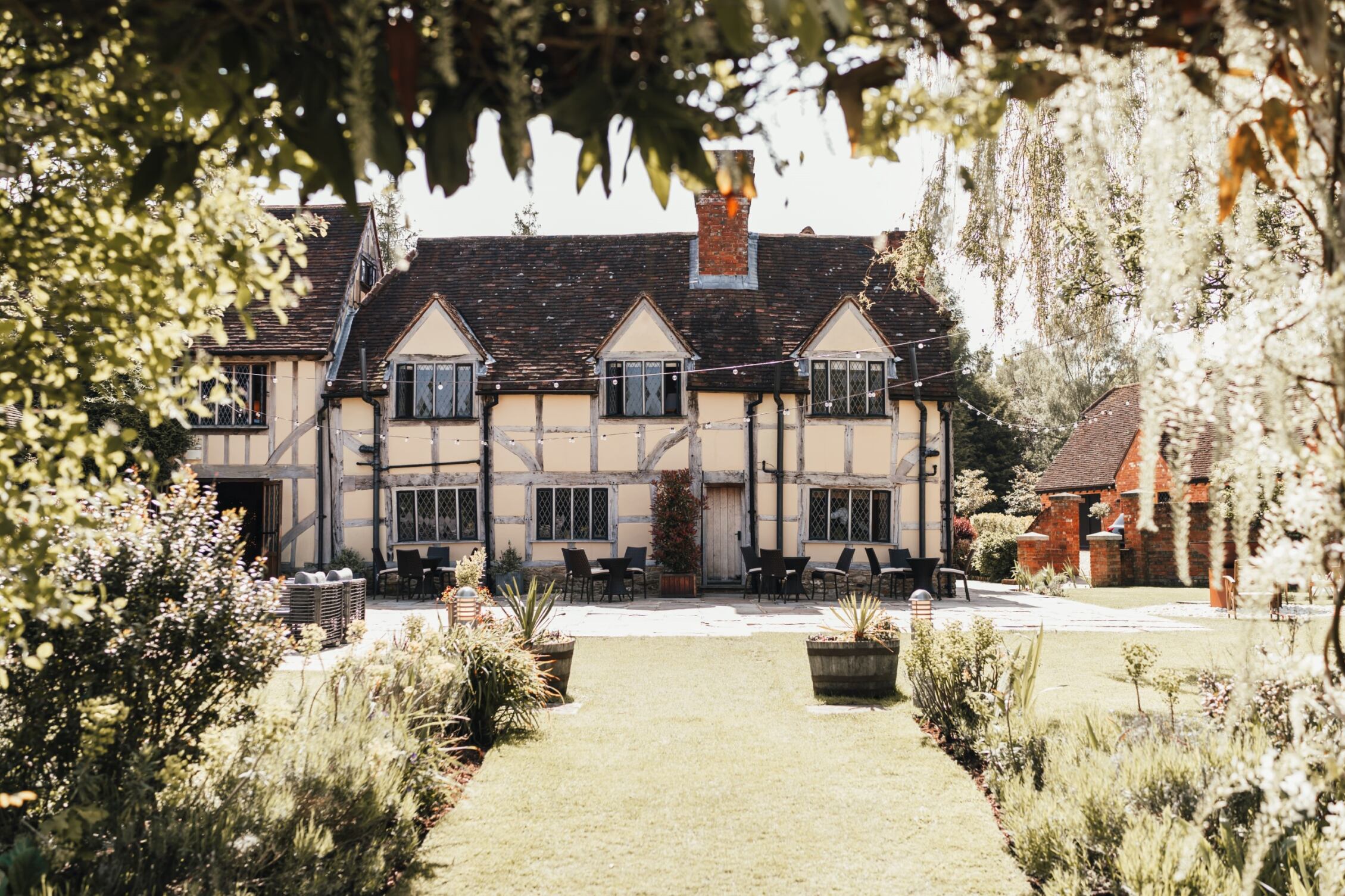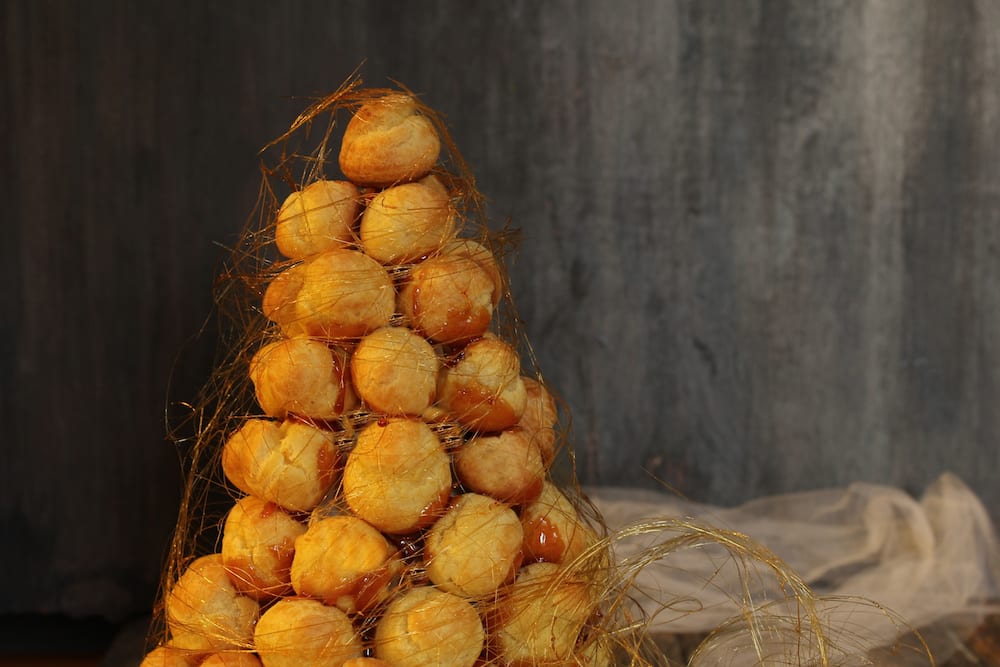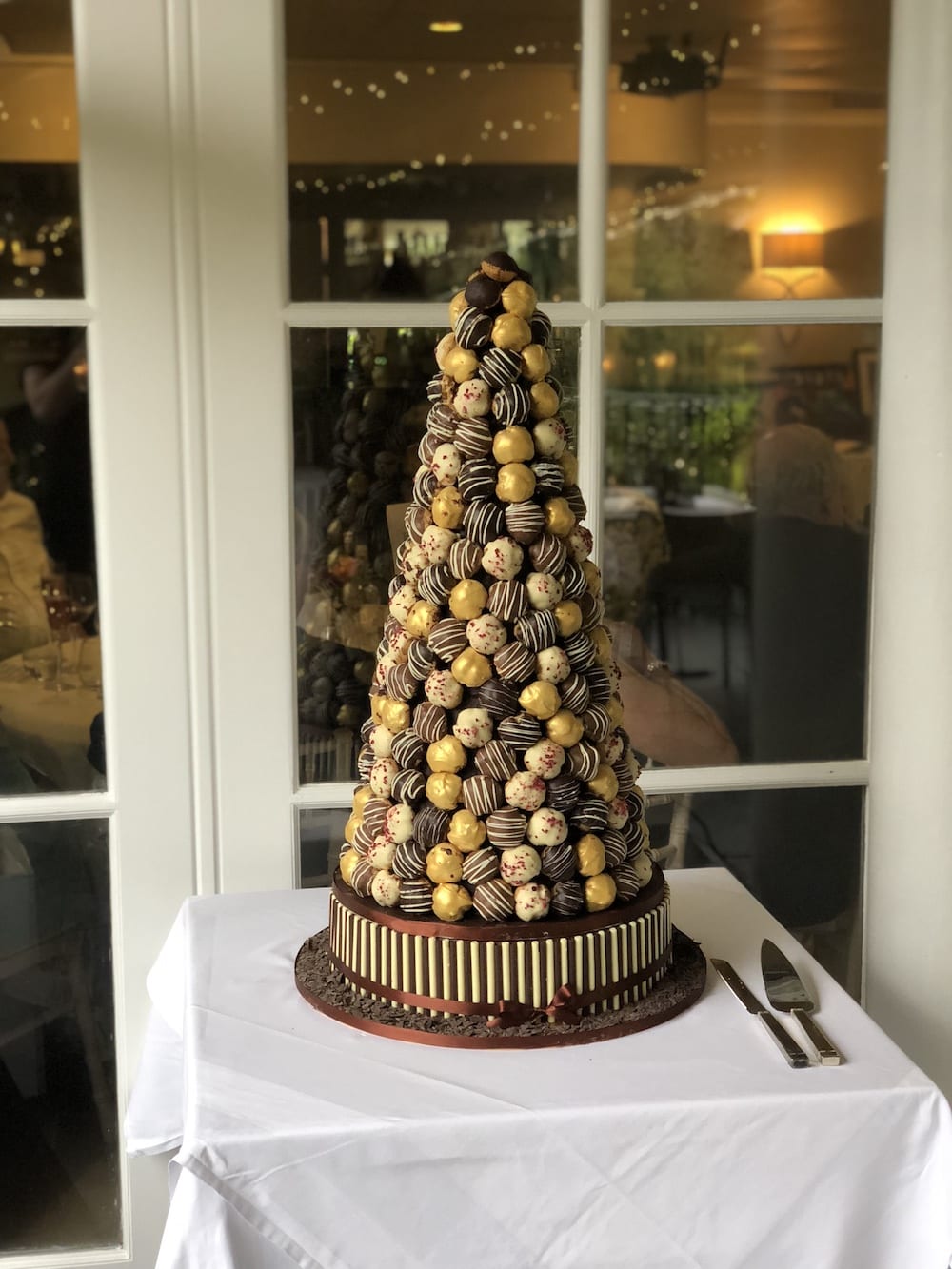CHOOSING A CROQUEMBOUCHE WEDDING CAKE
Tips and advice when it comes to choosing, displaying and cutting through a French-style wedding cake, otherwise known as a Croquembouche.
What is a Croquembouche?
In one of those strange twists of linguistic fate that happens from time to time, if you mention a croquembouche to someone French, they will tilt their head, regard the crazy ‘Anglaise’ (sic?) in front of them and wonder what on earth you are talking about.
Rather like the notion that we use the French vernacular when shouting ‘encore’ at a performance (where the French would say ‘Bis!’) 19th Century French cookbooks mentioned a croque-en-bouche – something that “crunches in the mouth” – but these were only ever savoury, and the term doesn’t appear to have made it into the 20th Century on that side of the Channel. A croquembouche, it seems, isn’t a croquembouche at all, but one could stand tall and proud in the corner of your wedding venue.
The croquembouche is no less popular at weddings in France compared to the UK, and no less popular than it was in the 19th Century, yet it quickly became known as a ‘Piece Montee’, which, you guessed it, is a general French term for ‘Wedding Cake’. Confused? Don’t be, happens all the time and both sides are convinced there is a conspiracy afoot (excuse the pun) to pull the rug from under each other’s culinary chefs clogs.
How to Make a Croquembouche
However, back in good ol’ Grande Bretagne, ask your wedding cake supplier for a croquembouche and you will get exactly you expect: a cone or pyramid of choux buns, with a light crunch on the outside, soft in the middle and filled with a delicious cream known as ‘crème patissier’ or, in less confusing parlance, pastry cream. Wrapped in a fine thread of spun sugar or drizzled with chocolate, whatever it’s called, it’s a classic that every pastry chef knows to be a standard for anyone taking him or herself seriously. The art of the choux bun is one that demands respect and practice, it’s hard physical work to make and doesn’t fair well in a machine, and it requires absolute precision in order to avoid a deflated catastrophe. With the buns made, perfectly, the pastry cream needs to be sweet, light, and set perfectly, not too much, not too little, to avoid either a school-custard disaster or crème Anglaise pouring out of the buns, and the spun sugar needs to be worked and worked, again by hand, to a fine thread that breaks on the lips. Not only is this classic demonstration of the skill of the ‘Patissier’ a delight to behold, it’s undoubtedly delicious to taste and provides the perfect antidote to the sense of overwhelming that can accompany the wedding cake decision.




